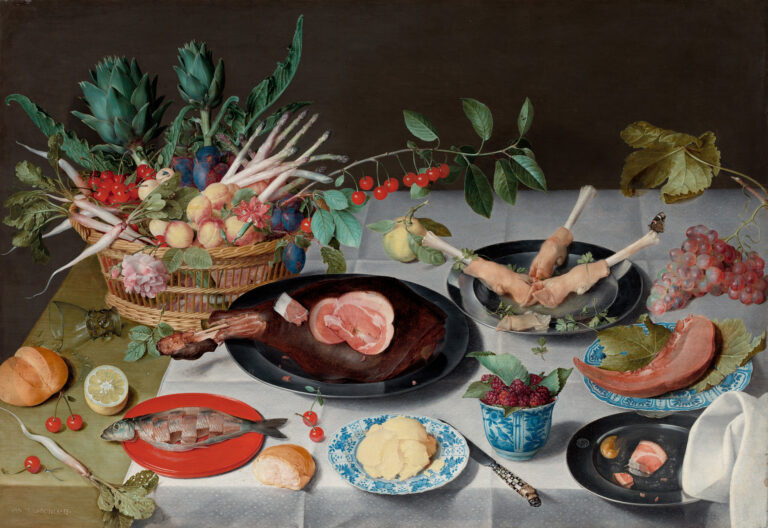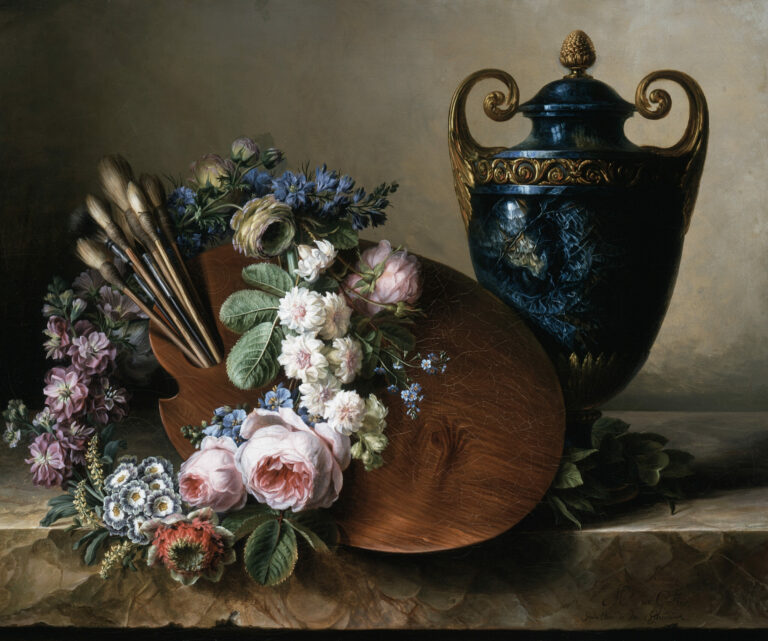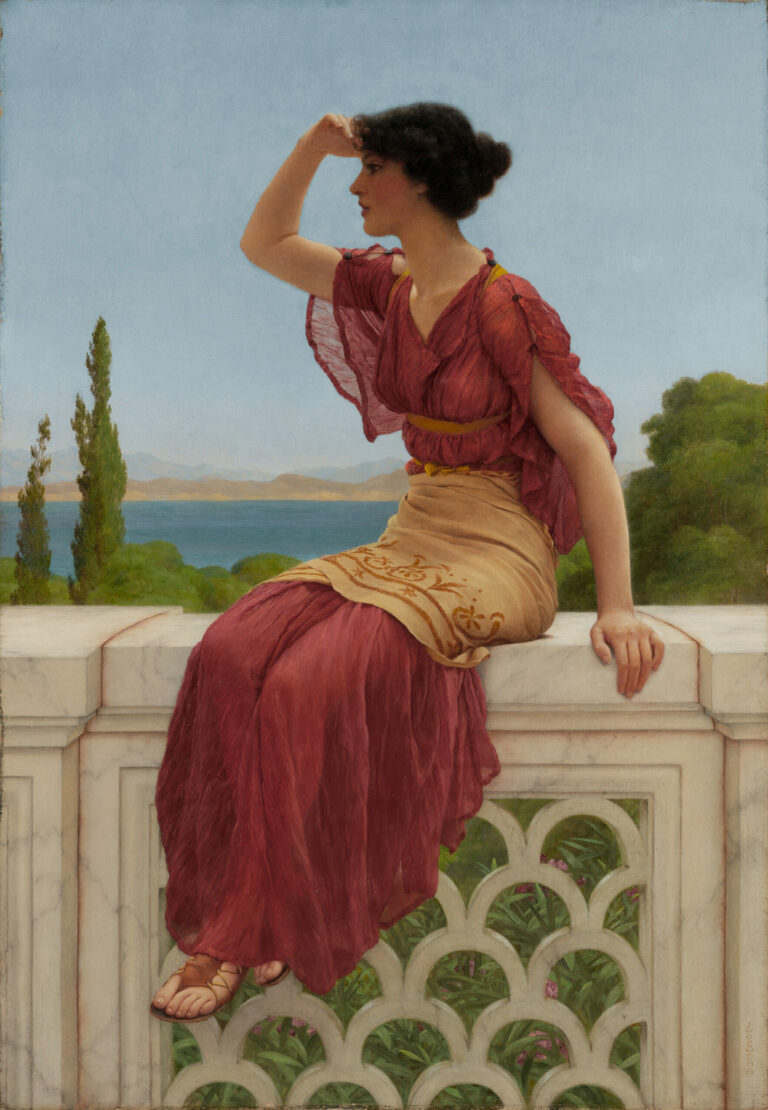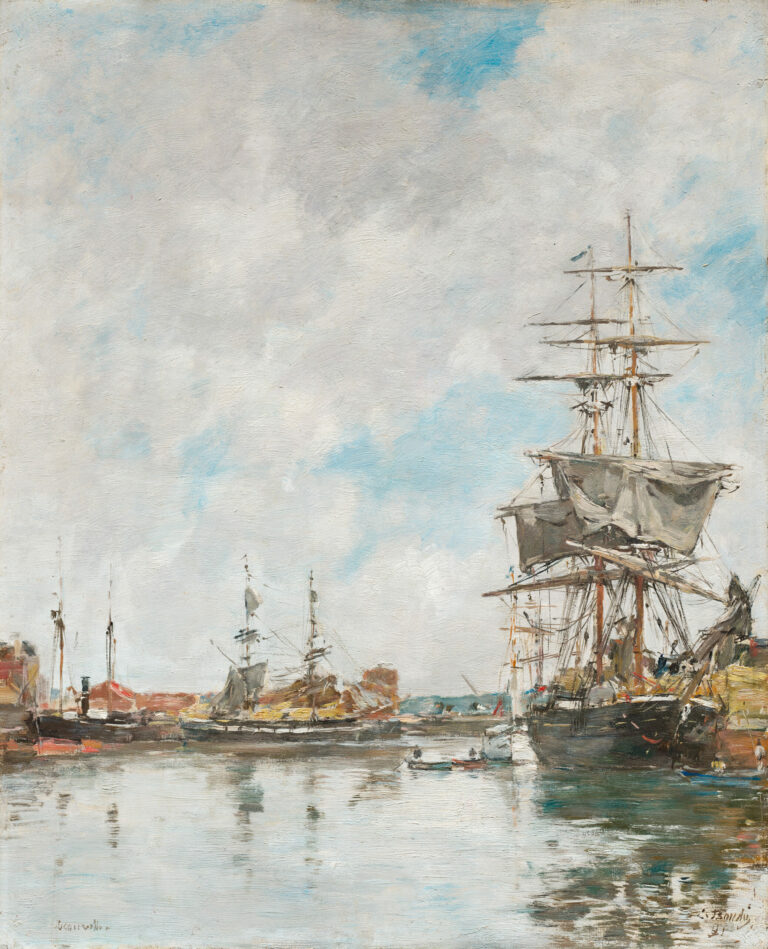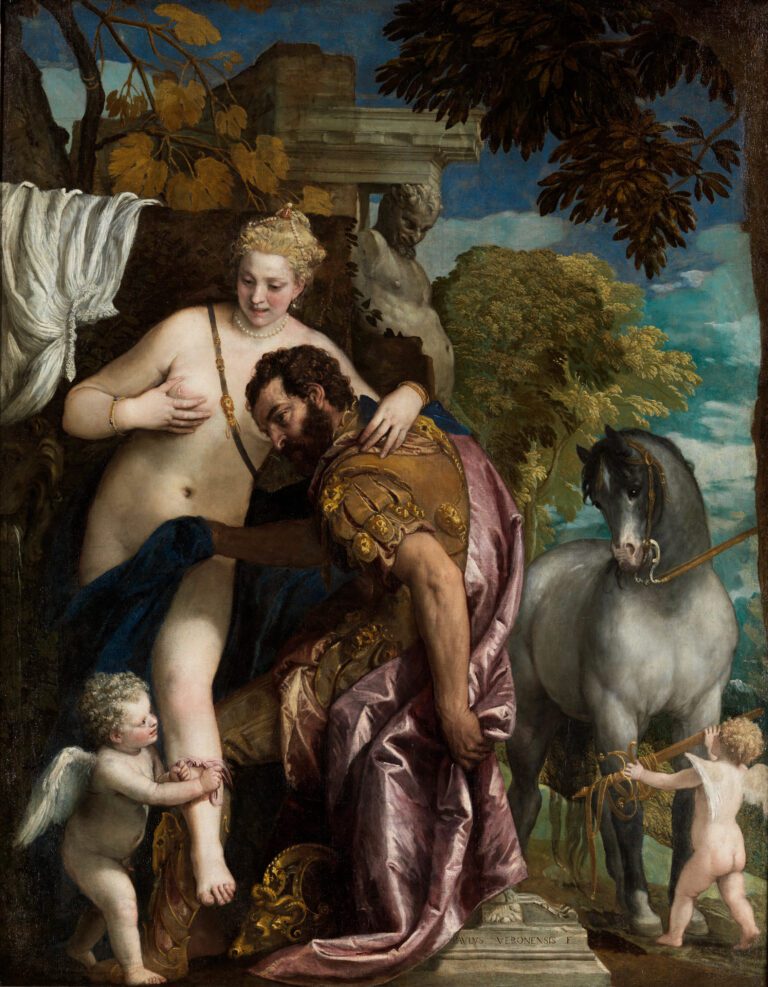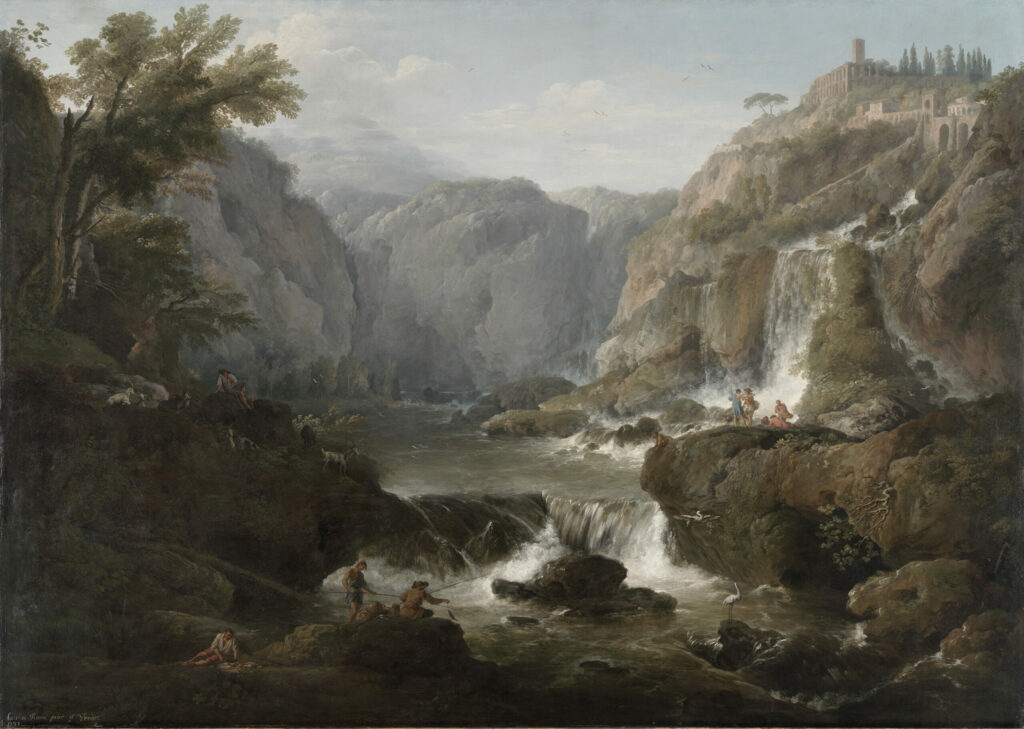
“The Waterfalls at Tivoli” from 1737 constitutes one of Claude-Joseph Vernet’s early works, synthesizing Italian and French landscape traditions.
This composition unfolds a panorama where waterfalls cascade in spectacular tiers, creating a dynamic interplay between the verticality of steep rocks and the fluidity of the aquatic element. Vernet skillfully orchestrates contrasts: the tormented geological formations are answered by luminous serenity. The ancient ruins crowning the cliff and the figures animating the foreground humanize this sublime nature, characteristic of Vernet’s approach. The refined palette, dominated by golden ochres and pearlescent blues, bathes the whole in an idealized Mediterranean atmosphere. This work reveals the exceptional artistic maturity of the young painter, capable from his Roman years of rivaling the established masters of heroic landscape.
Further information
- The Waterfalls at Tivoli, 1737, by Claude-Joseph Vernet
- 123.2 x 172.6 cm (48 1/2 x 67 15/16 in.)
- The Cleveland Museum of Art, displayed in 216B French and German
- https://www.clevelandart.org/art/1984.175
Claude-Joseph Vernet (1714-1789) embodies the apogee of French landscape painting in the Age of Enlightenment. Born in Avignon, he completed his training in Rome from 1734 to 1753, a decisive period when he assimilated the lessons of the great Italian masters while forging his personal style. Specializing in seascapes and Mediterranean landscapes, Vernet quickly conquered a prestigious European clientele. His series of “Ports of France,” commissioned by Louis XV, established his official reputation and demonstrates his genius for capturing harbor atmospheres. Father of an illustrious artistic lineage including Carle and Horace Vernet, he permanently established France as a major power in a genre long dominated by foreign schools, influencing all nascent 19th-century landscape painting.

